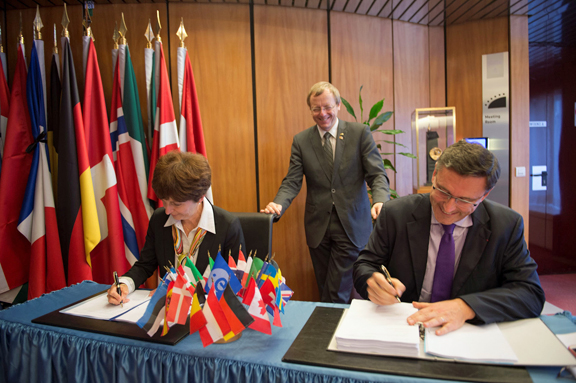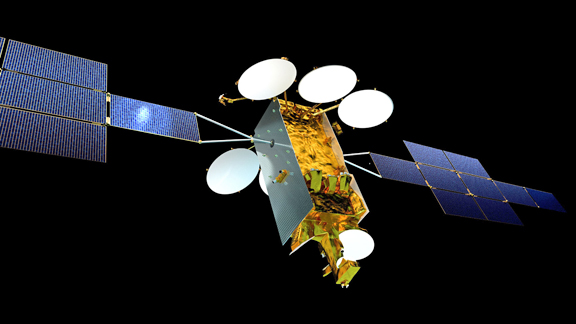[Satnews] Through a contract signed on November with the European Space Agency (ESA), Airbus Defence and Space continues to develop Eurostar Neo, their new generation of platforms for geostationary telecommunication satellites.

Under phase C/D of the NEOSAT program, this contract will lead to the development of the complete Eurostar Neo product line. The NEOSAT program was initiated by ESA and the French space agency, CNES, through the Investments for the Future Program (PIA) and continues today, with strong support from the UK Space Agency and participation from 16 additional ESA member states.

Artistic rendition of the NEOSAT platform.
Image courtesy of Airbus Defence and Space.
The NEOSAT program aims to support Airbus Defence and Space in providing a commercially attractive platform in the mid-range and high-end telecommunication satellite segments. Airbus Defence and Space will draw on an extensive network of industrial partners from across Europe to develop and provide this product line.
The new Eurostar Neo range will comprise an entire range of major innovations, including configuration solutions thatmaximise payload capacity and reduce production time, a choice of propulsion modes with optimized architecture for all-electric, all-chemical and hybrid versions, efficient power and thermal control solutions for all types of missions, including very high power (up to 25 kW), as well as optimized, reliable control systems that simplify operations.
Executive Comment
“Airbus Defence and Space has made the NEOSAT program one of its top priorities so that it can bring its new Eurostar Neo range to the market,” said François Auque, Head of Space Systems. “This range will combine innovation with tried-and-tested technologies, resulting in a product line that is just as reliable as ever while delivering the best performance in the market. We already successfully introduced all-electric propulsion on the Eurostar E3000 in 2014 by signing three contracts for high-capacity, all-electric satellites, leading to weight savings and improved efficiency. Now, by extending our range to more powerful models with the Eurostar Neo, we will be even more competitive. Thanks to the effective cooperation between industry and the agencies, we are taking a new leap forward.”
“ESA’s NEOSAT program is driving the development of the next generation of telecommunication platforms that will help Europe continue to be the leader on the global telecommunication satellites market. European satellite manufacturers are demonstrating just how prominent a role innovation plays in a competitive market,” said Magali Vaissière, Director of Telecommunications and Integrated Applications at ESA.



